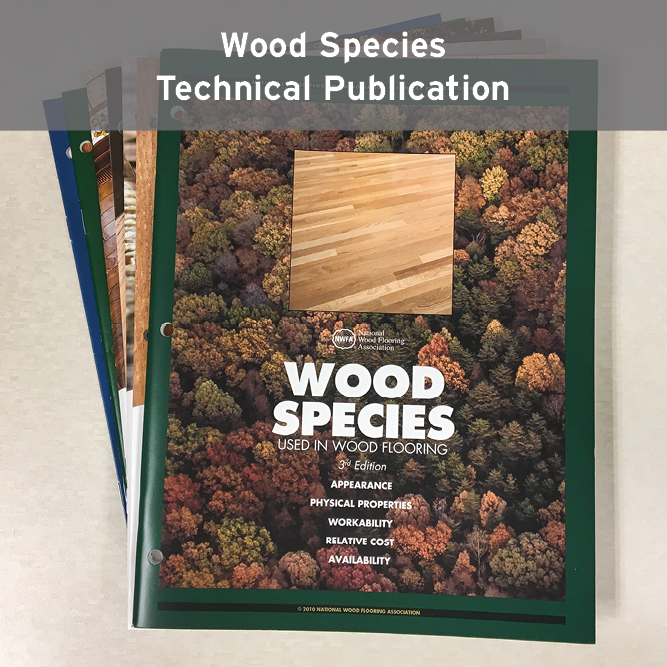Installing Hardwood Flooring Over OSB: It's All About Managing Moisture

An increasing number of homes and light commercial buildings have oriented strand board (OSB) subfloors. Builders choose OSB because it typically costs less than plywood, is free of knots and voids, and can be used interchangeably in typical flooring applications where the panels have the correct span rating. It provides a flat, solid base for any floor covering and can aid in the creation of even, stable and long-lasting floor finishes. But, as with other wood substrates, proper moisture management is essential for a quality installation-especially in regards to hardwood flooring.
In the event the moisture differential between the OSB and hardwood is too great at the time of installation, problems can arise. OSB that has absorbed moisture on the jobsite shrinks as it dries, which can loosen around nails and staples that attach the hardwood flooring. This can result in squeaks and pops when occupants walk across the finished floor. Additionally, wet OSB under drier hardwood flooring can cause moisture to migrate into the hardwood and result in cupped flooring. If the hardwood flooring is installed with excess moisture, it can shrink and create gaps.

Managing moisture
To help ensure moisture content levels are appropriately balanced between the OSB substrate and hardwood flooring, it is crucial to acclimate the hardwood flooring to the interior environment and confirm that the OSB is adequately dry. The National Wood Flooring Association’s (NWFA) “Hardwood Flooring Installation Guidelines” provide details on both topics. Additionally, because wood species and flooring type (i.e., solid strip versus engineered) among other factors can affect a floor’s moisture tolerance, hardwood flooring manufacturers usually provide instructions for their specific products.
Hardwood acclimation. The NWFA recommends that hardwood flooring not be installed-or even delivered to the jobsite-until the building is enclosed and temperature and humidity conditions match those that will be present once the building is occupied. Further, the hardwood should be allowed to adjust to the interior heated/air conditioned environment for at least five days before installation. Some manufacturers recommend even longer.
The NWFA or manufacturer-recommended acclimation periods provide baseline guidance. Of even greater importance is ensuring that the hardwood has reached its equilibrium moisture content (the level at which it is no longer gaining or losing moisture) in accordance with the manufacturer’s guidelines. There is no reliable way to eyeball this and there are no rules of thumb-using a good quality moisture meter is necessary (this author personally prefers digital pin meters that allow for selection of wood species). The NWFA recommends sampling the moisture in 40 individual boards for every 1,000 sq. ft. of flooring.

As with the hardwood flooring, it is essential to check the OSB’s moisture content using a moisture meter. For instance, the subfloor may appear to be dry on the surface, but still have elevated moisture within the panels. The NWFA recommends testing wood subfloor moisture in at least 20 locations per 1,000 sq. ft., and averaging the results. Areas near exterior and plumbing walls are especially vital to check.
Going beyond the NWFA guidelines, it is also worthwhile to test the moisture on both the top and bottom of the OSB panels and the bottoms of joists, especially over crawl spaces. In any instance, an abnormally high reading in one spot can indicate a trouble zone that needs attention beyond simply allowing the entire floor time to dry out. The NWFA considers a subfloor to be dry enough for hardwood installation in most regions when its moisture is 12 percent or less.
Acceptable moisture differential. Once the hardwood flooring is acclimated and the OSB substrate is adequately dry, the NWFA notes that the moisture difference between the two should not exceed: 4 percent for solid strip flooring less than 3” wide, and 2 percent for solid flooring 3” or wider.
For engineered hardwood flooring, check the manufacturer’s requirements since they may vary based on hardwood species, other material components, strip width and thickness. For example, 1/2”-thick Lyptus single-strip engineered flooring-a eucalyptus hardwood over a plywood base-in 3 1/4” and 5” widths requires less than 4 percent moisture difference between it and the wood substrate.

Other considerations
Although it is critical to take moisture into account when installing hardwood flooring over OSB, it is also important to keep in mind other installation best practices. These include ensuring that the floor is level, free of debris, and that the subfloor panels are properly attached to the underlying joists. Walk the floor to test for loose panels, listen for squeaks, look for nail pops and check the floor’s underside for any nails that missed the joists. If there are any problems, ask the builder to fix them before installing hardwood flooring.
OSB can accommodate glue-down, nail/staple or floating hardwood installations. With glue-down, follow the hardwood flooring manufacturer’s guidelines. Some prohibit water-based adhesives given the potential for both the flooring and wood substrate to absorb moisture from the glue.Some types of hardwood flooring also call for a vapor retarder between the hardwood flooring and subfloor. This is intended to protect against moisture migrating up through the subfloor-notably over crawl spaces-after the building is occupied, and is not a substitute for ensuring a proper moisture balance between the hardwood and subfloor during installation.
Achieving a quality hardwood floor over an OSB substrate is not difficult, and is largely the same as working on top of plywood. To avoid the costs and hassles of callbacks, take the time upfront to allow for proper hardwood acclimation and a dry subfloor. With careful attention to moisture management at time of installation, the building occupants will enjoy a quality floor for years to come.
–by Pat Fitzgerald, Weyerhaeuser
Looking for a reprint of this article?
From high-res PDFs to custom plaques, order your copy today!








